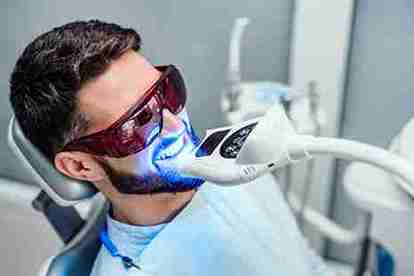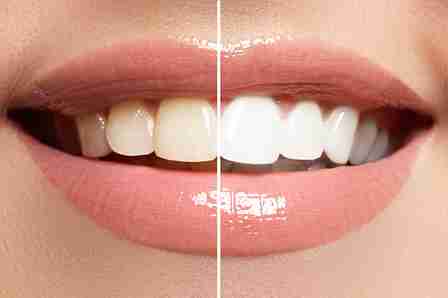How Emergency Dental Care Affects Whitening Options

In the world of smiles, unexpected dental issues can throw a spanner in the works of your cosmetic plans. When a toothache or breakage strikes, addressing pain and preventing infection become top priorities. However, these urgent interventions can influence your future desire for a whiter grin. From enamel health to sensitivity levels, emergency treatments and bleaching procedures are closely entwined. This post unpacks how immediate care might affect your whitening aspirations, helping you navigate a path from relief to radiance.
The link between urgent treatments and cosmetic goals
Emergency dental procedures often focus entirely on relieving pain or addressing infection, but they can have knock-on effects for whitening treatments later on. For instance, an extensive filling or a root canal may alter the shade or translucency of a tooth, making it more challenging to achieve uniform results. Furthermore, trauma to enamel can leave microscopic cracks, which, if left untreated, can absorb bleaching gels unevenly. Understanding these intersections early on can save time and help set realistic expectations for your post-emergency smile makeover.
Immediate impacts on enamel integrity
When a dentist intervenes in an urgent situation, preserving enamel is paramount. Despite modern techniques prioritising conservation, any removal of tooth structure – whether to clear decay or to access the pulp – reduces the thickness of enamel. Since whitening agents penetrate enamel to break down stains, less enamel can mean less predictable whitening outcomes. Moreover, areas that have undergone repair might respond differently, potentially requiring targeted treatments to harmonise the overall shade.
Post-procedure sensitivity and pigmentation
The most frequent adverse effect after urgent dental work is sensitivity. It can linger for days or even weeks as nerves settle. Applying peroxide-based bleaching agents during this period may exacerbate discomfort, deterring many from proceeding. Additionally, certain materials used in restorative work can discolour over time, such as composite resins, and may not lighten alongside natural enamel. This mismatch often necessitates bespoke solutions, like blending techniques or specialised whitening protocols.
Timing your whitening around emergency care
Timing is everything when balancing emergency treatment and cosmetic procedures. Jumping straight into whitening might seem appealing after enduring pain, but patience can pay dividends.
Pre-treatment evaluation
Before committing to any bleaching regimen, a thorough check-up ensures your mouth is in optimum condition. It is advisable to revisit any recent work to confirm its integrity. For example, your emergency dentist in Oldham will assess the seals on restorations and check for any residual infection. This step not only safeguards oral health but also identifies potential spots that might not respond to bleaching, allowing for more tailored treatment plans.
Optimal waiting periods
A useful rule of thumb is to allow at least two weeks after major dental work before whitening, though this can vary. The emergency dentist in Oldham might recommend an even longer hiatus if you underwent extensive procedures like root canal therapy. Waiting gives enamel a chance to remineralise and for soft tissues to heal. During this window, gentle maintenance – such as using fluoride toothpaste and avoiding acidic or staining foods – can help preserve your teeth until they’re ready for whitening gels or laser treatments.

Choosing the right whitening method post-emergency
Once the all-clear is given, the next step is selecting a modality that complements your oral history.
Professional in-chair whitening
Dentists can deliver powerful bleaching agents directly under controlled conditions, often achieving several shades of improvement in a single session. Many providers of Teeth whitening Oldham offer in-chair options that incorporate desensitising agents to soothe nerves simultaneously. This approach is especially beneficial for teeth that have undergone emergency fillings or crowns, as the dentist can manually adjust the application to avoid restored areas and focus on natural enamel surfaces.
At-home kits and custom trays
For those preferring to whiten at their own pace, custom-fitted trays loaded with a lower-concentration gel offer a flexible alternative. At-home kits for Teeth whitening Oldham typically involve wearing the trays overnight or for a few hours daily over several weeks. Because the gel concentration is milder, sensitivity is generally more manageable. Plus, you can pause the treatment if discomfort arises, providing autonomy and control over your cosmetic journey.
Video link – Affordable Teeth Whitening Oldham – See Instant Results
Tips to prepare for whitening after an emergency
Protecting enamel
A robust enamel surface absorbs whitening agents more uniformly. Incorporating remineralising products containing fluoride or calcium-phosphate can bolster enamel health before your whitening appointment. Additionally, regular use of a neutral pH mouthwash and avoiding acidic beverages – such as citrus juices, wine or fizzy drinks – helps maintain enamel density. If you plan Teeth whitening Oldham, these measures amplify the impact of bleaching gels, ensuring a more homogenous finish.
Managing sensitivity
It’s not uncommon for individuals to experience heightened sensitivity post-procedure, so having strategies in place is wise. Prescription-strength fluoride gels offer more thorough protection, while desensitising toothpaste formulations containing potassium nitrate can precondition your teeth.Another tactic involves shorter, staggered bleaching sessions, allowing nerves to adjust gradually. If sensitivity persists, liaising with your practitioner can result in adjustments to gel concentration or application duration, keeping your comfort at the forefront.
Finding a reliable dental professional in Oldham
Qualities to look for
Seek an Emergency dentist in Oldham known for their blend of clinical expertise and patient-centred care. Qualifications such as a Membership of the Faculty of Dental Surgery (MFDS) or a Diploma in Restorative Dentistry demonstrate advanced training. Equally important are soft skills – clear communication, empathy and an ability to explain complex procedures in plain English. Reading patient testimonials and checking for registered practice accreditations can help ensure you’re in capable hands.
The benefits of local expertise
Working with an emergency dentist in Oldham ensures seamless coordination between urgent interventions and cosmetic follow-ups. Local practitioners are familiar with the nuances of community health demographics and can expedite treatments when time is of the essence. Furthermore, some clinics in the area specialise in emergency care alongside teeth whitening Oldham, offering comprehensive packages that combine prompt relief with aesthetic enhancements. This integrated approach minimises the risk of miscommunication and streamlines your path from pain management to pearly whites.
Integrating maintenance routines for lasting results
Routine check-ups and cleanings
Post-whitening care is critical to sustaining brightness and safeguarding oral health. Your dentist can monitor restorations and identify any new problems before they become crises with routine visits. Professional cleanings remove surface stains and plaque that can dull your smile, complementing the whitening you’ve invested in.
Lifestyle considerations
Small adjustments in daily habits can extend the longevity of your whitening results. Avoiding tobacco products is perhaps the single most effective change, given their potent staining properties. When sipping staining drinks, use a straw to reduce contact with front teeth, and rinse with water afterwards. Employing a whitening touch-up kit every three to six months can also help maintain shade consistency, especially if you have a predisposition to discolouration.

Setting realistic expectations
Understanding natural limitations
Not all stains respond equally to bleaching. Intrinsic discolouration – caused by factors such as trauma or certain medications – may require alternative cosmetic treatments, like veneers or bonding. A skilled practitioner can advise on whether whitening alone will achieve your goals or if supplementary procedures are needed.
Conclusion
In this ad, EDA guides you from the urgencies of dental emergencies to achieving a brilliant smile. Understanding how immediate treatments intertwine with cosmetic goals helps you time and select the ideal whitening method. EDO expertise ensures your oral health remains the priority, paving the way for effective, comfortable bleaching. Whether opting for in-chair sessions or tailored at-home kits, rest assured that EDO supports you every step of the way for radiant results without compromising care.




